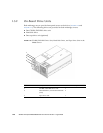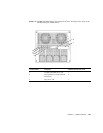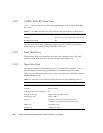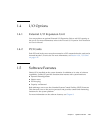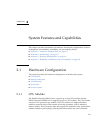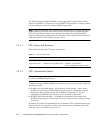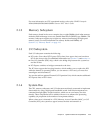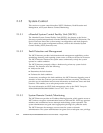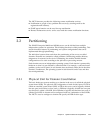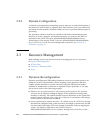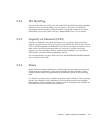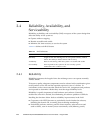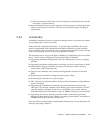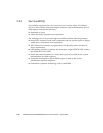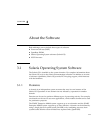
2-4 SPARC Enterprise M4000/M5000 Servers Overview Guide • August 2009
2.1.5 System Control
This section on system control describes XSCFU Hardware, Fault Detection and
Management, and System Remote Control/Monitoring.
2.1.5.1 eXtended System Control Facility Unit (XSCFU)
The eXtended System Control Facility Unit (XSCFU), also known as the Service
Processor, operates independently from the SPARC64 VI/SPARC64 VII domains. The
Service Processor directs the system startup, reconfiguration, and fault diagnosis.
This is where the system management software, which is the eXtended System
Control Facility (XSCF) firmware, runs
.
2.1.5.2 Fault Detection and Management
The XSCF firmware provides fault detection and management capabilities, such as
monitoring, detecting, and reporting system errors or faults to the Service Processor.
The XSCF firmware monitors the system status continuously to help the system
operate in a stable condition.
The XSCF firmware promptly collects a hardware log when any system fault is
detected. The firmware does the following:
■ Analyzes the fault
■ Determines the fault location
■ Evaluates the fault conditions
As necessary, according to the fault conditions, the XSCF firmware degrades parts of
domains or resets the system to prevent another fault from occurring. The firmware
provides easy-to-understand and accurate information on hardware errors and fault
locations. This enables you to take prompt action on faults.
For more information on XSCF fault management, refer to the SPARC Enterprise
M3000/M4000/M5000/M8000/M9000 Servers XSCF User’s Guide.
2.1.5.3 System Remote Control/Monitoring
The XSCF firmware provides an IP address filtering function, which permits access to
XSCF and an encryption communication based on SSH and SSL. XSCF logs operator
mistakes and unauthorized access attempts made during system operation. The
system administrator can grant users appropriate privileges for particular tasks.
The XSCF firmware also manages user accounts for system or domain
administration. The system administrator can grant users an adequate user privilege.



